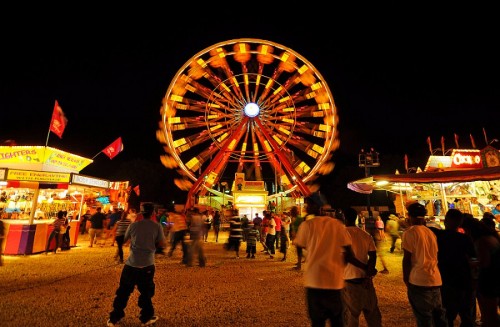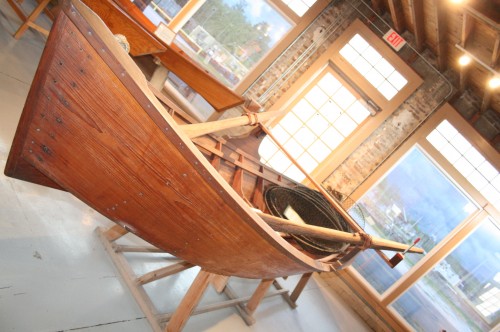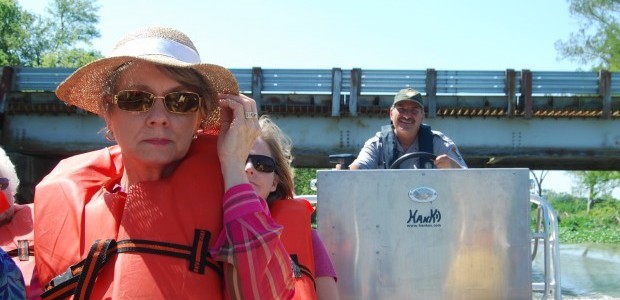
May Goings On
May 2, 2012
Pre-Pilgrim dugout among center’s attractions
May 2, 2012The damp, swirling draft that dances across our faces the morning of our journey is refreshing.
The stifling Louisiana summer is still weeks away as we take a 30-mile trip against the stream of Bayou Lafourche, and the absence of perspiration leaves the mind clear to concentrate on the surrounding wilderness, animate and not, as we motor toward our Greek-inspired destination – the Madewood Plantation House in Napoleonville.
The setting is serene. This is particularly true as the bayou snakes along the last leg to Donaldsonville, a stretch where dense oaks, sycamore, willows and cypress isolate the body from societal noise. Here, the only bustles are faint rustles and occasional chirps as birds flutter from branch to branch in advance of our boat.
Although people are absent, aside from a few groups of fishermen and other boaters, the bayou is alive. Foliage is a coagulated mass of deep green, red-winged blackbirds hop from bank to bank, Muscovy Ducks wade and an alligator rests atop the water’s surface. Then, an egret soars above with the persistent breeze buttressing its ivory wings. Spring has bloomed.
“We live everyday surrounded by water,” Fred Fuller, a park ranger and our captain, says. “This is part of the water highway that is Louisiana, at least southern Louisiana. This is all part of our lives. We are getting a glimpse of our community and in the same glimpse we are our community in that we are using the waterways.”
*****
The Wetlands Acadian Cultural Center of Jean Lafitte National Historic Park and Preserve offers two versions of Bayou Lafourche boat tours through May 25. Each tour departs the center, at 314 St. Mary St., Thibodaux. In addition to the trip to Madewood, park officials bring visitors to the E.D. White Plantation Home in north Thibodaux.
The boat-tour program, which started before Hurricane Katrina, resumed this year after more than a three-year hiatus. The wooden boat previously commissioned was no longer useable, and it took the center time to secure the funding – through Jean Lafitte Park donations – and purchase the 26-foot, 20-passenger aluminum boat now in use.
Because the center offers youth summer camps in June and July, and because the weather is too hot in August, the tours recess this month and won’t return until the leaves begin to bronze.
Cindy Ryan and Catherine Goulas, of Lafayette, drove to Thibodaux for the tour after reading about it in Country Road Magazine. The same can be said for friends Joyce Ronquillo and Janis Harvey, of Lacombe and Baton Rouge, respectively.
A three-generation family of five from Thibodaux signed up to tour during Leslie Montet’s 60th birthday. Montet’s husband, son, daughter and grandson made the trip, which morphed into a surprise celebration when members of the extended family met the group at Madewood.
No one in the group had previously visited the plantation.
*****
Enormous oaks cast yards of shade before the majestic mansion. A backpack-toting park guide leads our group’s pilgrimage toward the red screen-door entranceway, flanked by six columns along the front of the white manor.
Thomas Pugh, of North Carolina, brought ancient Greece to the bayou after he and his brothers immigrated to Lafourche to partake in the burgeoning sugarcane industry. He wanted a distinguishable dwelling, our tour guide Alice Himel says, and it’s hard to make the point that he didn’t succeed.
“He was a little bit ahead of his time,” Himel says. “Let’s put it this way, he wanted to be the best of the Joneses.”
It took eight years to build the home. Much of this time was passed gathering materials, most of which came from the La. Highway 308 property and adjacent bayou. All wood to be used was cypress cut from the property’s trees. Clay was dredged from Bayou Lafourche. In the field, the hands of slave laborers made 600,000 bricks that would form the home’s skeleton.
Aside from the grand columns, several features unique to south Louisiana were incorporated inside the plantation home. It was the first home in Assumption Parish to have closets. The central staircase that rises from the entryway was taboo in its era, because of the subsequent mingling between sexes. Generally, Greek Revivalist-styled staircases were hidden, Himel says.
“It’s lovely,” Harvey says.
Pugh died in 1852, and his widow – a mother of 15 – capably managed the home for years after. Eliza Foley is credited with safeguarding it from destruction and looting by Union soldiers, who breached the perimeter during the war.
“He was nature’s nobleman,” Pugh’s headstone, on the backside of the property, reads. “With a heart whose bounteous charity overshadowed all it knew.”
After the war, ownership changed hands several times among prominent families in the area. At some point, the Godchauxs, Bakers and Thibauts claimed ownership of the mansion.
Naomi Marshall purchased the home in 1964. It has since been passed on to her son Keith Marshall, who began operating a bed and breakfast on the premises in the 1980s.
“It’s very peaceful,” Leslie Montet says of the tour and her first trip to Madewood. “We take these things for granted. It’s only 20 miles down the road, and we had never been.”
“The experience is first class,” her husband Mark agrees.
*****
Prior to the tour’s conclusion, Himel calls attention to a photograph in the Madewood ballroom. Its relevance lies in its setting, Bayou Lafourche. The eloquence is the subject, a stationary riverboat between the banks.
On the brisk ride back to Thibodaux, Mark Montet wistfully relays information his late father passed down to him. He tells of Bayou Lafourche as a broad waterway prior to the construction of a lock system in Donaldsonville circa 1903 to control flooding.
This was the time of riverboats, a time when the people of the area relied on Bayou Lafourche as their highway. It was when sediment and a small river curtly flowed through to the Gulf of Mexico.
Its wartime significance, during the War of 1812 and the Civil War, is also relayed. A Union fort was stationed at the north end of the bayou in Donaldsonville. And during the Battle of New Orleans, years prior in 1815, Jean Lafitte used his knowledge of the channels to block British forces.
“Some people tend to call him more of a pirate,” Fuller says of the park service’s namesake. “He helped the nation during a time of war, so there’s a good side to him. But he’s much like everybody. We all have our good and our bad days, I guess.”
Since the bayou was dammed from the Mississippi River, it has shriveled, and the thought of contemporary large vessels passing through is as foreign as Pugh’s home was in the 19th century.
On a three-hour tour, this is all apparent, like a mosaic without the boundaries of time – modern usage cast against anecdotes of yesterday and symbols recognizing the catalysts of change.
– editor@gumboguide.com
Janis Harvey, of Baton Rouge, looks ahead while touring Bayou Lafourche through the Wetlands Acadian Cultural Center of Jean Lafitte National Historic Park and Preserve. Park ranger Fred Fuller captains the 26-foot, 20-passenger aluminum boat. Cindy Ryan, of Lafayette, is also pictured.
Leslie Montet, of Thibodaux, celebrates her 60th birthday with grandson Hudson Oncale on the return trip from Madewood Plantation.
Joyce Ranquillo, of Lacombe, examines the original kitchen’s authentic fireplace at Madewood Plantation in Napoleonville.
Mark Montet, of Thibodaux, calls out to a group of fishermen during a tour of Bayou Lafourche.












